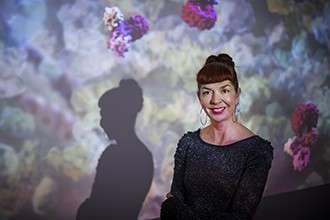New biomedical animations make their debut

Three new Australian biomedical animations will debut today, showcasing a world of pulsating cells, writhing proteins and dividing DNA as they capture Australian research and bring it to life.
The animations, premiering today at an event at Federation Square, were created as part the Inspiring Australia project VIZBIplus. Inspiring Australia is the national strategy for engagement with the sciences, working across all levels of government and industry to promote science and science literacy in Australia.
VIZBIplus was launched in 2012 to train three new biomedical animators in communicating the latest Australian biomedical research through inspiring and engaging three-dimensional animations.
Dr Maja Divjak from the Walter and Eliza Hall Institute of Medical Research, Dr Kate Patterson from the Garvan Institute and Mr Chris Hammang from CSIRO created the new animations, and were mentored by internationally renowned biomedical animator Mr Drew Berry from the Walter and Eliza Hall Institute.
The animations cover a range of topics from cancer and type 2 diabetes to resistant starch, and are based on research being done at their host organisation.
Dr Divjak said her animation, Inflammation and type 2 diabetes, highlighted how diseases associated with inflammation, such as type 2 diabetes, were 'lifestyle' diseases that represented one of the biggest health risks in our society.
"My animation looks at the role of the newly-discovered protein called the inflammasome in type 2 diabetes, which is being studied by researchers here at the Walter and Eliza Hall Institute," Dr Divjak said. "The inflammasome is a really amazing structure employed by the immune system to protect the body from infection. However, it also plays a key role in the development and progression of chronic immune diseases such as type 2 diabetes."
Dr Patterson from Sydney's Garvan Institute said her animation, Cancer is not one disease, focused on the role of a 'tumour suppressor' protein called p53 in the development of cancer. Tumour suppressor proteins can detect genetic changes in cells that may cause cancer and can prevent tumours from growing.
"Mutated p53 is just one of the thousands of mistakes that can occur in cancer," Dr Patterson said. "DNA sequencing and other new technologies now enable these mistakes to be detected in individual cancers. What's really exciting is that different types of cancer can share some molecular mistakes, which means treatments developed for one cancer could be used to treat another."
Mr Hammang from CSIRO, Sydney, said his animation, The Hungry Microbiome, described how starch was broken down in the gut. He said the animation was based on research into 'resistant starch', which protected against colorectal cancer. "I hope viewers will see the importance of eating beans and other foods rich in resistant starch," Mr Hammang said.
Project leader Dr Sean O'Donoghue from CSIRO said animations were an important communication tool for the science community.
"We are in the middle of a communication revolution, and I see animation as one of the keys to unlocking the mysteries of science," Dr O'Donoghue said. "In modern science, we are discovering very complex phenomena that are often hard to communicate because they are occurring at a molecular scale. Biomedical animations have the power to make these invisible events visible."
More information: All of the animations are available online: www.vizbi.org/plus/


















